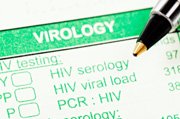Advertisment
ESOT 2011 Report – Preventing infections through Virology screening

Cristina Baleriola, from NSW, Australia presented data on the important factor of screening donors for infection. The expansion of the donor pool leads to utilisation of donors with risk factors for viral infections. The main element of donor screening relies on serological and nucleic acid testing (NAT).
Cristina Baleriola explained that the major issues relating to NAT testing for blood-borne viruses (BBV) in donors are:
- Availability of NAT testing for all donors. This is addressed through national government-sponsored provision of testing services.
- Rapid turnaround time in order to limit organ ischaemic times and not affect the process of organ transplantation. This is addressed through 24-hour laboratory services, use of automated platforms, multiplexing of tests where possible, routine use of NAT assays, and use of parallel testing on two platforms to ensure maximum safety in minimum time.
- Technical limitations on the tests include: multiple transfusions in the donor resulting in haemodilution and free haemoglobin from deceased donors that may interfere with NAT assays. These technical issues are dealt with by laboratory assessments of the effects of these conditions on test results.
The NAT of HIV, HBV and HCV are used to detect blood-borne viruses in organ donors during the window period. This has further reduced the risk of donor-derived infections and makes safer the use of organs from increased risk donors. In Australian services, this has contributed to approximately 4 additional (otherwise wasted) organs per month becoming available.
Cristina Baleriola concluded that the use of single NAT testing enhances the risk-reduction through questionnaires. Additional issues that will need to be confronted include the risk of HBV infection from HBcAb positive donors, the continuing risk of introduction of exotic infections and the importance of viral infections such as EBV and HHV8 in the rising incidence of post-transplant tumours.
Quantitative Analysis of CMV Infection in Solid Organ Transplant
Sowsan F. Atabani from the UK explained that human cytomegalovirus (CMV) is an opportunistic pathogen causing morbidity and mortality among patients undergoing solid organ transplantation. Natural history studies found that the amount of CMV DNA detected in whole blood among patients post-transplant correlates with the development of CMV end-organ disease. The monitoring of CMV DNA using quantitative real-time PCR (qPCR) is a sensitive method of detection and provides clinicians with a timely result for pre-emptive intervention.
Sowsan F. Atabani and colleagues analysed pre-emptive CMV therapy in 692 prospectively-followed patients receiving a renal or liver transplant between July 2002 – Jan 2010. Routine monitoring for CMV DNA in whole blood using qPCR was performed for the first 90 days post-transplant, treatment begun once a viral load was detected above 3000 copies/ml, and discontinued following two consecutive negative PCR results. This strategy was also used for CMV seronegative recipients of organs from seropositive donors.
Post-transplant, CMV viraemia developed in 43% of all transplant recipients. Among those who developed viraemia, peak viral load was 10-fold higher in CMV seronegative recipients compared to seropositives. The duration of viraemia and number of patients requiring therapy was significantly greater in seronegative recipients. Although time to first detectable CMV DNA was not dependent on serostatus, the viral growth rate was found to be significantly faster in the seronegative recipients. 1.5% of liver transplant recipients and 0.8% of renal transplant recipients developed histologically confirmed CMV disease.
Sowsan F. Atabani concluded, “Although the risk factors associated with high level CMV replication were not affected by the use of aggressive pre-emptive therapy, in our experience, a pre-emptive treatment strategy guided by qPCR monitoring was found to be safe and effective with no increase in the development of CMV disease post-transplant.”
References:
RO-162 – PREVENTING DONOR DERIVED INFECTIONS THROUGH VIROLOGY SCREENING: REDUCING RISK AND INCREASING ORGAN AVAILABILITY. Cristina Baleriola, William D. Rawlinson, Microbiology, South Eastern Area Laboratory Services, Randwick, NSW, Australia.
RO-166 – A QUANTITATIVE ANALYSIS OF CMV INFECTION IN SOLID-ORGAN TRANSPLANT RECIPIENTS MANAGED EXCLUSIVELY ON PRE-EMPTIVE THERAPY. Sowsan F. Atabani et al. UCL Medical School





